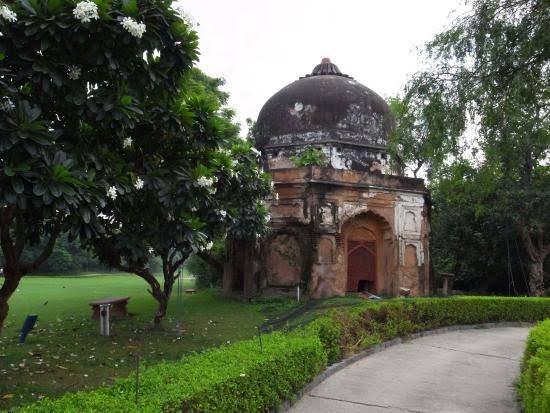
Bagichi Tomb is a lesser-known, yet significant, tomb located in Delhi, often attributed to the period of the Lodi dynasty (15th-16th centuries), during the later phase of the Delhi Sultanate. The tomb is situated within a garden enclosure or "bagh," which is why it is referred to as the "Bagichi Tomb." Despite its modest size, it holds historical and architectural value, especially for its association with the Sultanate period's funerary architecture. Key Features: Architecture: Design: The Bagichi Tomb follows a square plan with a domed roof, characteristic of Indo-Islamic tomb architecture of the Lodi period. The tomb's design elements, such as its arches and domes, echo the aesthetic styles of the time, with traces of both Persian and local Indian influences. Materials: Built primarily from sandstone and rubble masonry, the tomb's structure reflects the utilitarian approach of the Lodi-era monuments, combining simplicity with grandeur. Surrounding Garden (Bagichi): The tomb is situated within a garden enclosure, which was a common feature in many tombs of the period. These gardens were designed not only as places of rest for the dead but also as spaces for contemplation and relaxation for the living, reflecting the Islamic paradise garden concept. Condition: Over time, the Bagichi Tomb, like many other Sultanate-era structures, has suffered from neglect and degradation. Efforts have been made at different times to restore and preserve the tomb, but its relatively obscure status has meant that it hasn't always received the same attention as more prominent monuments. Establishment: Time Period: The exact date of the Bagichi Tomb's construction is uncertain, but it is generally attributed to the Lodi dynasty, placing its construction in the late 15th or early 16th century. Cultural Significance: While it is not as famous as the larger tombs like those in the Lodhi Gardens, the Bagichi Tomb represents the widespread architectural patronage of the Lodi rulers and the importance they placed on garden tombs as symbols of power and piety. The Bagichi Tomb remains an example of Delhi’s rich but often overlooked medieval heritage, contributing to the understanding of the evolution of Islamic architecture in India.